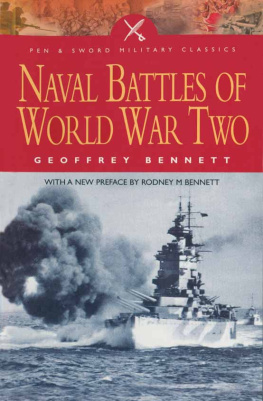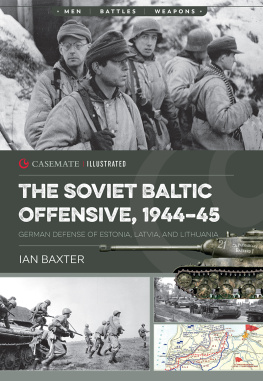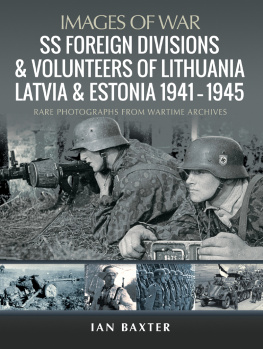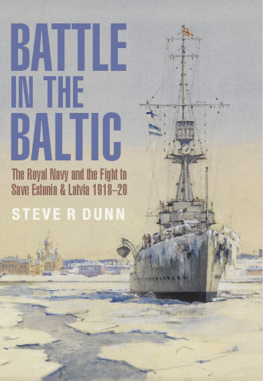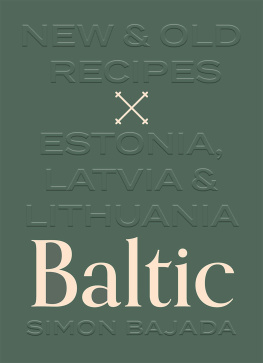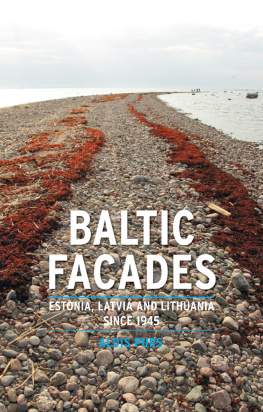First published in 1964 by Collins, London, as Cowans War and in 2002 by Berlinn Limited, Edinburgh, as Freeing the Baltic
This edition published in Great Britain in 2017 by
Pen & Sword Maritime
an imprint of
Pen & Sword Books Ltd
47 Church Street
Barnsley
South Yorkshire
S70 2AS
Copyright the Estate of Geoffrey Bennett 1964
Preface and Addendum Rodney M Bennett 2002, 2017
ISBN 978 1 47389 307 8
eISBN 978 1 47389 309 2
Mobi ISBN 978 1 47389 308 5
The right of Geoffrey Bennett to be identified as the Author of this work has been asserted in accordance with the Copyright, Designs and Patents Act 1988.
A CIP catalogue record for this book is available from the British Library
All rights reserved. No part of this book may be reproduced or transmitted in any form or by any means, electronic or mechanical including photocopying, recording or by any information storage and retrieval system, without permission from the Publisher in writing.
Pen & Sword Books Ltd incorporates the imprints of Pen & Sword Archaeology, Atlas, Aviation, Battleground, Discovery, Family History, History, Maritime, Military, Naval, Politics, Railways, Select, Transport, True Crime, Fiction, Frontline Books, Leo Cooper, Praetorian Press, Seaforth Publishing and Wharncliffe.
For a complete list of Pen & Sword titles please contact
PEN & SWORD BOOKS LIMITED
47 Church Street, Barnsley, South Yorkshire, S70 2AS, England
E-mail:
Website: www.pen-and-sword.co.uk
Preface to the Pen and Sword edition
Rodney M. Bennett
E STONIA WAS ONLY a few years out of the grip of the Soviet Union when I first visited its delightful walled-in capital, Tallinn (called Reval, its old German name, in this book), with its cobbled streets and excellent restaurants. Overlooking the main square was the copper-domed spire of the Church of the Holy Ghost. Upon entering, I was a bit surprised to see the British Navys white ensign flying from a wall below the richly-carved altar. From my fathers book, originally published in 1966 as Cowans War , when the Cold War was still in full freeze, I was aware of the venture just after World War I when British warships were sent into the Baltic and helped the three Baltic states secure independence. This was clearly what was being recorded. Beneath the ensign, a plaque named Britons who had inspired and led the actions which helped the nation obtain its freedom in 1920. High on the list, just below Winston Churchill, was the man who had been in command, Admiral Sir Walter Cowan.
I then moved to a gate in the wall on the edge of the old town, with a large round tower known as Fat Margaret, which houses a maritime museum. By the entrance a black marble plaque was topped with the silhouette of a destroyer and recorded in both English and Estonian:
IN MEMORY
of the officers and seamen of the British Royal Navy who served and gave their lives in the cause of freedom in the Baltic during the Estonian War of Independence
191820
The following Admirals were decorated with the Estonian Cross of Liberty for their distinguished services:
Admiral Sir Edwyn Alexander-Sinclair G.C.B. M.V.O VRI/I
18651945
Admiral Sir Walter Cowan of the Baltic Bart. K.C.B. D.S.O. M.V.O. VRI/I
18711956
Admiral Sir Sydney Freemantle G.C.B. M.V.O. VRI/I
18671958
Admiral Sir Bertram Thesiger K.B.E. C.B. C.M.G. VRI/I
18751966
On behalf of the grateful people of Estonia.
Clearly a lot of care had been taken, though a pedant might say an asterisk* should have been placed after Cowans DSO, as he had been awarded a bar in 1944 forty-eight years after the original.
So I became aware that with their recent freedom, at least one of the Baltic states had not forgotten Britains aid. The museum was also offering a pamphlet provided by the British Embassy, which gave a brief account of events and included a tribute from the then Prime Minister Mart Laar.
The British were amongst those who gave their lives for the fight for freedom in the Baltic in 19181919. The losses of the British fleet in the Estonian War of Independence amounted to one light cruiser, one destroyer, two sweepers and eight torpedo boats. The presence of the British fleet and it operation eliminated the Soviet Baltic Fleet and, moreover, assured the young democracies they were not alone in the fight. And this is something we should never forget.
This all led to my contact with George Howard, Earl of Carlisle, who has made a special study of the Baltic states and lived in Estonia for some time. He had organised a further plaque in the Church of the Holy Ghost, recording the name of all the 112 British servicemen who had died in these actions. I was privileged to attend the unveiling of this by First Sea Lord Admiral West. Then a further similar plaque was placed in Britain, in Portsmouth Cathedral, unveiled by the Duke of York.
Finally, on the historic Royal visit to the Baltic states in 2006, the Duke of Edinburgh unveiled a third in the Latvian capital, Riga. On this occasion the Latvian Navy added to the commemoration by putting a (Soviet built) minesweeper to sea and throwing a wreath where some of the lives had been lost.
In all three Baltic states I also saw how the years of Soviet domination are not forgotten. At the end of World War II they had been occupied by the USSR and forcibly incorporated in its Union. It took until the collapse of communism in the 1990s for them to regain their freedom and they are all now not only recognised by and belong to the United Nations, but are also members of both the European Union and NATO.
Both Tallinn and Riga have occupation museums and the Lithuanian capital, Vilnius, has opened the former NKVD headquarters with its water-torture chamber and execution room where over 200 were shot. Lithuania kept up guerilla resistance to Soviet domination for eight years after 1945.
A final memento is in the Imperial War Museums outstation at Duxford airfield, near Cambridge; the hull of Augustus Agars Coastal Motor Boat. This was for some years on an eyot (island) in the Thames, near Kingston, which had been home to the works of the original makers, Vosper Thornycroft. The London museum has his Victoria Cross.
As it was not mentioned in the original edition it may be helpful to know a little about the author, my father, and the background to this work.
A Dartmouth trained naval officer, and the son of a naval officer, he qualified in Signals and spent a significant part of his early career in the immediate pre-World War II years as a flag lieutenant on various admirals staff. His main wartime appointments were first in Freetown, Sierra Leone, a main centre for routing Atlantic convoys, and then in the Mediterranean, where he was awarded the DSC for, the citation says, ... leadership, zeal and skill while serving as signals officer on the staff of Flag Officer Force H since April 1943 in operations which finally led to the surrender of the Italian fleet. He was presented with this by King George VI in Buckingham Palace in 1945.
Promoted to commander at the end of the war, he continued for a while in the Mediterranean, commanding HMS St. Brides Bay. He then served at the Admiralty in Bath, when at the beginning of 1953 he was promoted to captain (while the author of this preface was on national service in the Royal Navy training to be a midshipman on the carrier HMS Indefatigable in Portland harbour).


